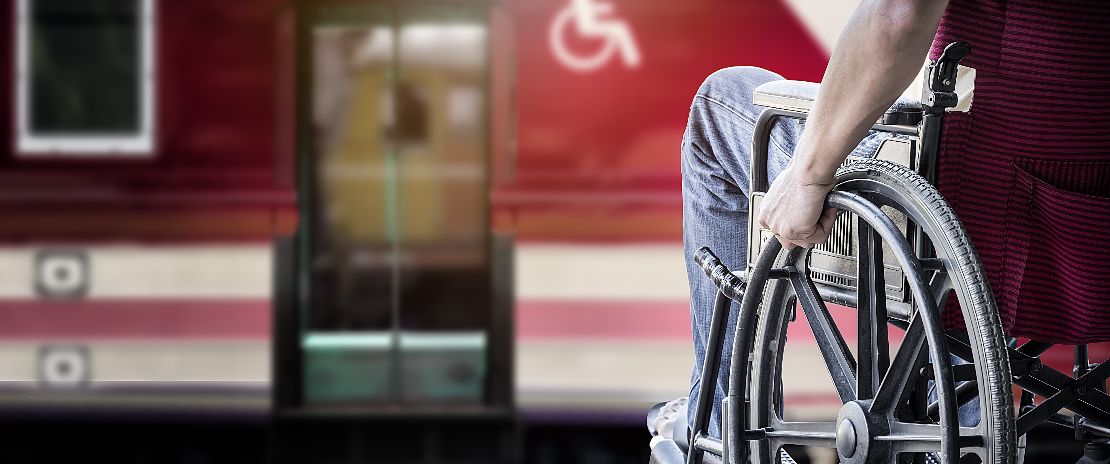With restrictions being eased, people are getting out and about more and for many this means travelling by rail. Here, Helen Dolphin details what to expect as a disabled passenger if you need to get the train.
The current advice from the Government is that wherever possible people should avoid using public transport and instead try to walk, cycle or drive. However, with restrictions being eased, more people are being encouraged back to work and for many this means travelling by rail.
Social distancing measures
I haven’t been on a train since before lockdown, but I know that railway stations are now set out very differently to how they were previously. Just like the supermarkets there is tape everywhere setting out where you need to queue for tickets and the distance between each person. You may therefore find it harder to navigate yourself around. If this concerns you it may be possible to arrange for someone to meet you at an earlier part of your journey, such as the bus stop or taxi rank. Some train operators are also putting pictures and videos on their websites to help customers feel better prepared about what the station now looks like.
Perspex screens
Many of the customer service desks will now have plastic screens in front of them to help protect staff. If you rely on lip reading you may find it harder as the screens tend to reflect light. Some staff may also be wearing face coverings. If you need help understanding the information you are being given, ask for it to be written down for you.
Payments
If you are buying your ticket at the station, payment by contactless card is encouraged to avoid any unnecessary contact. You may also find that you can use your ticket on another operator’s service if your journey is delayed or cancelled. Do be aware that many train services have been reduced or are subject to change at short notice.
Boarding and assistance
When getting on the train you should wait for all the passengers to get off before boarding. You may also find it better to travel at off peak times when the train is less busy. If you need assistance to travel you are not required to book ahead but where possible you should contact your train operator to discuss your requirements.
The person providing the assistance will try to keep two metres away from you and will only move closer if absolutely necessary. If you require assistance with luggage you will be asked to set it down and then move away. Keeping two metres apart is clearly not possible for wheelchair users who need to be pushed or visually impaired people who need guiding. In these circumstances wheelchair users will be asked not to turn around, and an arms length distance will be kept between the visually impaired person and the person guiding them. A plastic covering or some other clothing will also be used by the person guiding which can be removed after assisting.
Where possible the person providing the assistance will not get in the lift with you and will use the stairs and meet you at the bottom. It is likely that people providing assistance will be wearing a face covering and gloves. It is now compulsory for people travelling on public transport in England to wear a face covering. However, some groups are exempt such as young children, those with breathing problems and some people with disabilities. You should be prepared to remove your face covering if asked to do so by police officers and police staff for the purposes of identification. In Scotland and Wales wearing a face covering on public transport is not compulsory. It is also advisable to wash your hands frequently or use hand sanitiser.
On board
When travelling on the train there may be restrictions on where you can sit as many operators are trying to maintain a two metre distance between passengers not in the same family group. You should take your own food and drink with you from home, or buy it at the station as catering on trains has been either stopped or significantly reduced. It may not be possible to book a seat or the wheelchair space so you will have to find a seat when the train arrives.
Train travel is certainly going to be very different to how it was before Coronavirus. However, any passenger requiring assistance should still be able to access the help that they need and have confidence travelling by rail. If you’re worried, or want clarification on anything, then please contact the rail provider in advance of travelling so they can let you know what measures they’ve put in place.
Related Articles
Social distancing and dealership visits
How Sarah Alexander is keeping busy during self-isolation
Helen Dolphin’s 10 things to do in self-isolation
![]()





